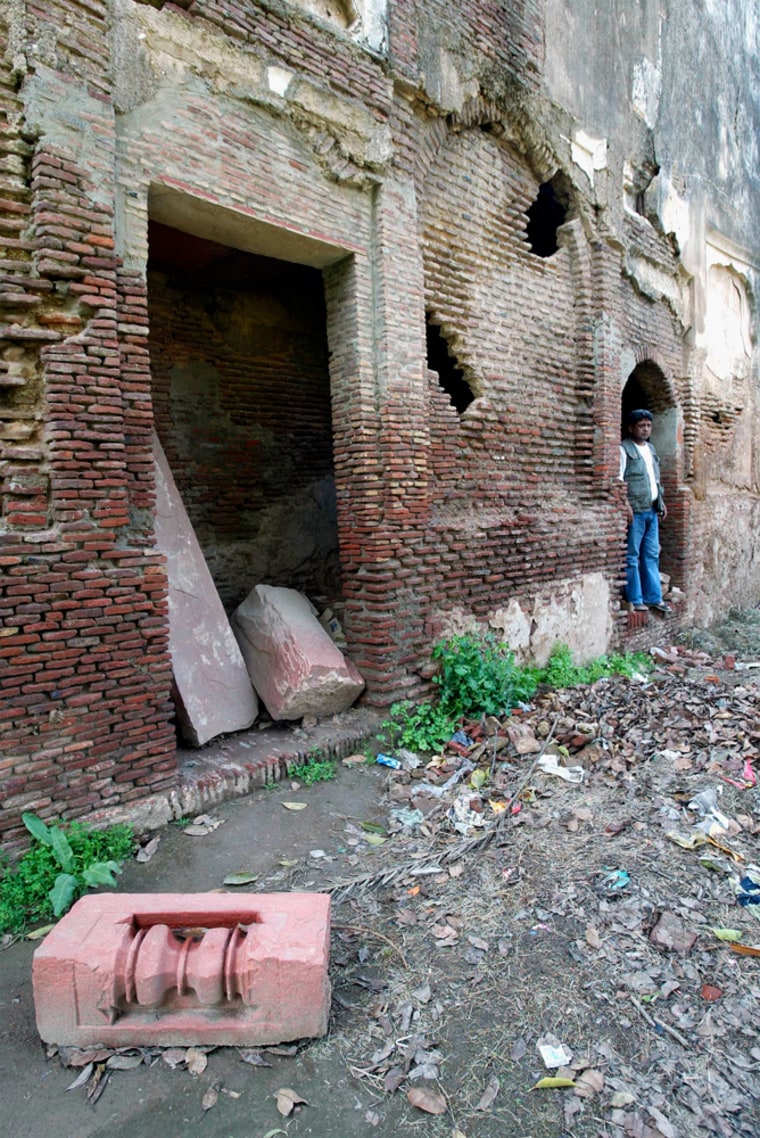Many Pakistani archaeological sites from its thousands of years of rich history are crumbling away as officials tussle over who should look after them.
A cradle of ancient civilizations and crossroads of Greek, Buddhist, Hindu and Muslim cultures, Pakistan has a treasure-trove of ruins but many are being built over, pilfered by art thieves and villagers or succumbing to the elements.
The federal government’s archaeology department has control over most of the country’s main sites but provincial officials argue they should be in charge of looking after their ruins.
Orya Maqbool Jan, head of the Punjab provincial government’s archaeology department, says the province has a history of conservation and preservation dating back to British colonial times at the beginning of the last century.
“But for the last 50 years things were shifted back to the federal government and Punjab was not given the responsibility of looking after its own heritage,” Jan said in an interview in his office in the city of Lahore, the provincial capital.
Jan said federal authorities’ neglect had led to the destruction of 32 sites in Punjab.
“People have razed them to the ground and built houses over them. It’s a big loss.”
Restoration efforts by federal authorities had also caused irrevocable damage, he said.
“The principles of conservation laid down by UNESCO have not been adhered to,” he said.
'Done nothing'

Three years ago, the federal government handed Jan’s department responsibility for three sites — the Mughal-era Shalimar Gardens in Lahore, the Lahore Fort and the Katas Raj Hindu temple.
Jan says he has improved the sites though he says up to half of his spending has gone on correcting the wrongdoing of the federal authorities. He says he wants to take over responsibility for all of the province’s monuments.
Across town in his office in the huge Lahore Fort, federal government archaeological engineer Muhammad Tanweer scoffs at Jan’s assertions.
“They’ve done no conservation work, no restoration work. They’ve not spent a single penny,” Tanweer said.
“They’ve just done the gardens,” he says, pointing to lawns inside the magnificent 500-year-old fort where schoolchildren in red and blue uniforms were playing.
Federal Minister of Culture Sayed Ghazi Gulab Jamal bristles when asked about Jan’s criticism.
“The provincial government has not done a great job with what belongs to them,” he said. But he said responsibility for more monuments could be handed over if provinces showed they could improve sites and had the capacity to handle more.
“The main aim of everyone is to conserve and improve the sites so if somebody else can show it, why not?”
No protection
The federal government has 380 registered sites that it is responsible for.
But Pakistan’s most prominent archaeologist, Ahmad Hassan Dani, said many more sites were not registered under a colonial-era act and they got no protection at all.
“There are so many monuments that have not been brought under that act,” said Dani, who has worked as an archaeologist across South Asia since 1944.
“They are not looked after by them at all, in fact, they do not know about them at all,” he said.
Only about a third of Pakistan’s sites had been excavated, he said.
Villagers often looked after old mosques, but Buddhist and Hindu ruins were often pillaged by thieves supplying artefacts to the international black market, and picked over by people looking for masonry to build their homes, he said. “They will disappear.”
Dani said authorities should work together: “If the federal government can’t look after them, then the provincial government can or the district council can.”
Another huge problem for whoever is in charge is encroachment. Sites are meant to be protected by a 200-foot (60-meter) buffer zone, but unregulated construction crowds many.
The ornate pavilions and fountains of the Shalimar Gardens, built by the Mughal emperor Shah Jahan in 1642, are an island of tranquillity in a traffic-clogged Lahore suburb.
Up to now, the garden’s walls have kept out most of the din and fumes and kept at bay the sprawl of concrete and tarmac. But illegal construction up against the thick, white walls is causing flooding and damaging artwork inside the gardens, experts say.
Jan said 106 structures built illegally against the wall had been earmarked for demolition, but some residents said they would refuse to go.
“We’ll set ourselves on fire in protest,” said factory worker Mohammed Saeed who lives in tiny house in the shadow of the wall.